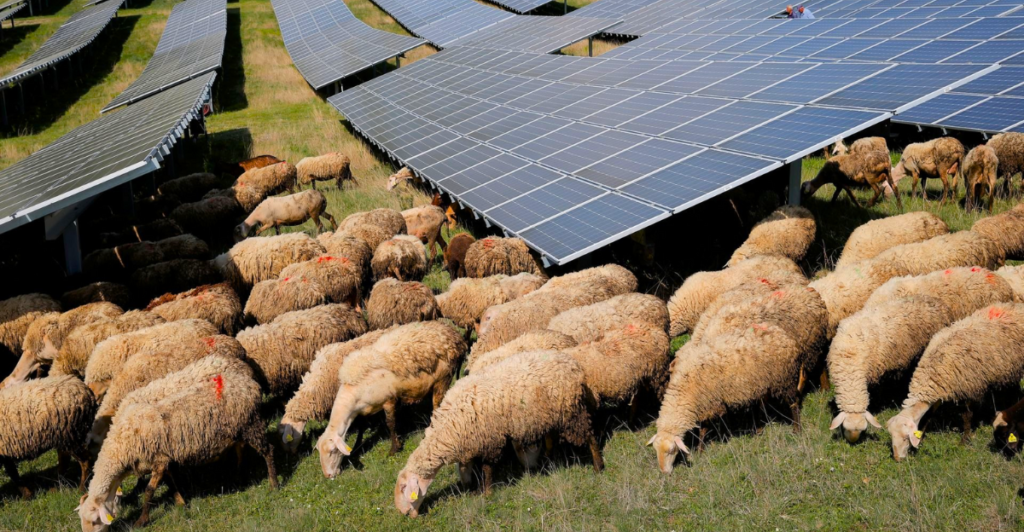
In an unexpected twist, sheep are stepping up to play a crucial role in America’s green energy future. As solar projects expand across the country, these woolly workers are being put to the task—helping keep panels clean, reducing maintenance costs, and even boosting sustainability. Here’s how sheep play a significant role in the global solar industry.
It’s Called Solar Grazing
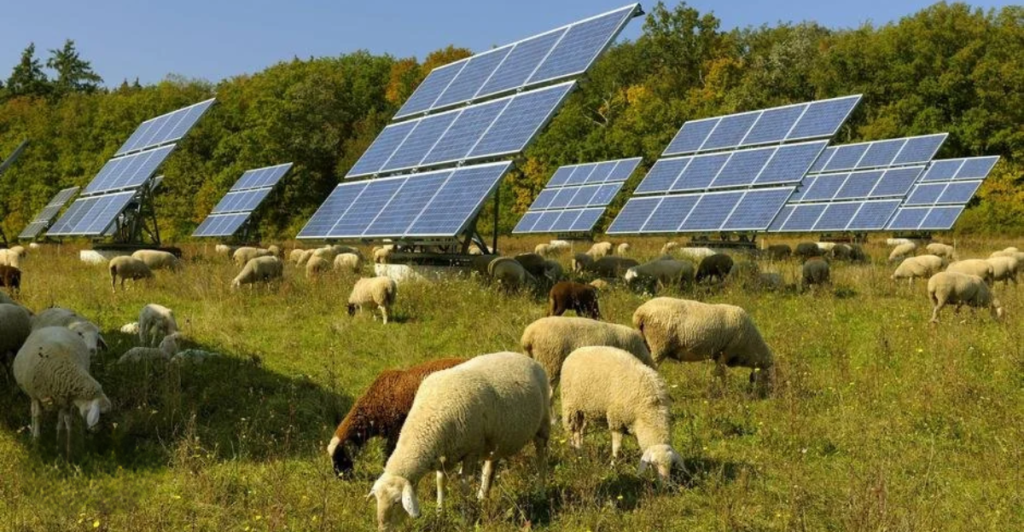
Solar grazing is a unique partnership between sheep and solar farms. Instead of using machines or chemicals, sheep graze on the land beneath solar panels to maintain vegetation. This natural approach helps keep the grass short, prevents weed growth, and ensures solar panels remain free from obstructions—boosting efficiency while keeping costs down.
How Does Solar Grazing Work?
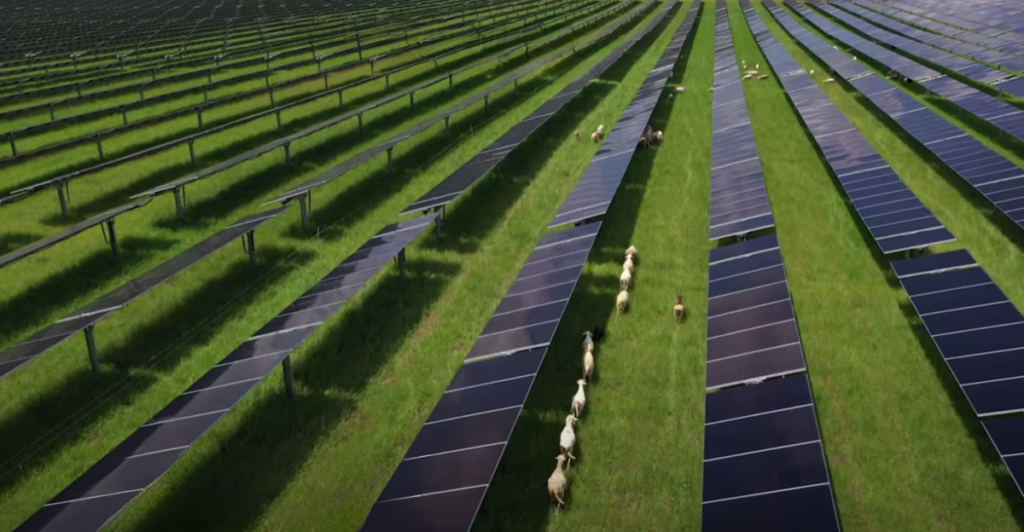
Solar grazing works simply and effectively. Farmers introduce sheep to solar farms, where they graze beneath the panels. Their grazing keeps grass trimmed and controls weeds, eliminating the need for mowing equipment or pesticides. This keeps solar panels clear of debris, optimizing energy production and cutting maintenance costs. It’s a win-win for energy producers and the environment!
How Sheep Help Solar Panels Perform Better
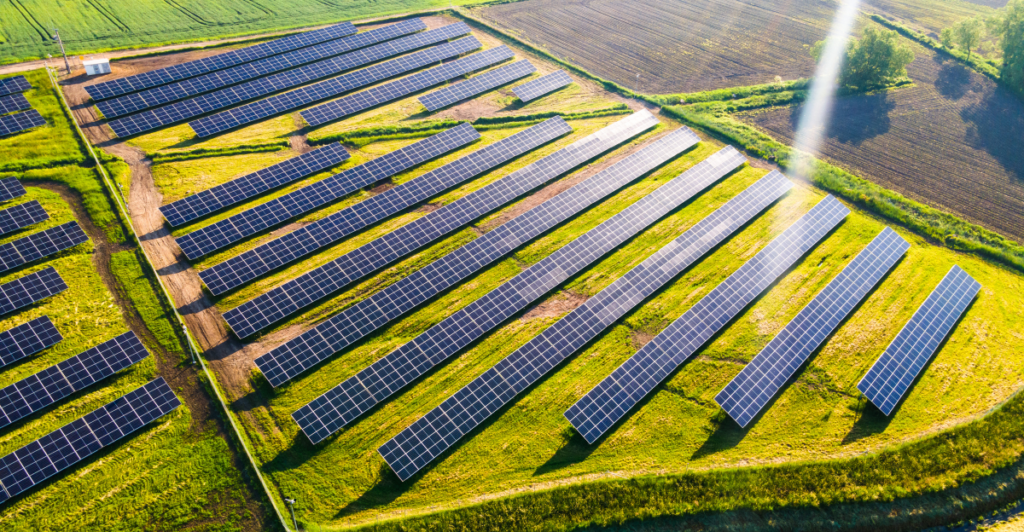
Sheep play a crucial role in maintaining solar farms by grazing the grass that can block sunlight from reaching the panels. Taller grass can create shade, reducing solar panel efficiency. By keeping the grass short, sheep ensure that the panels get maximum exposure to the sun, boosting energy output.
Why Sheep Over Cows or Goats?
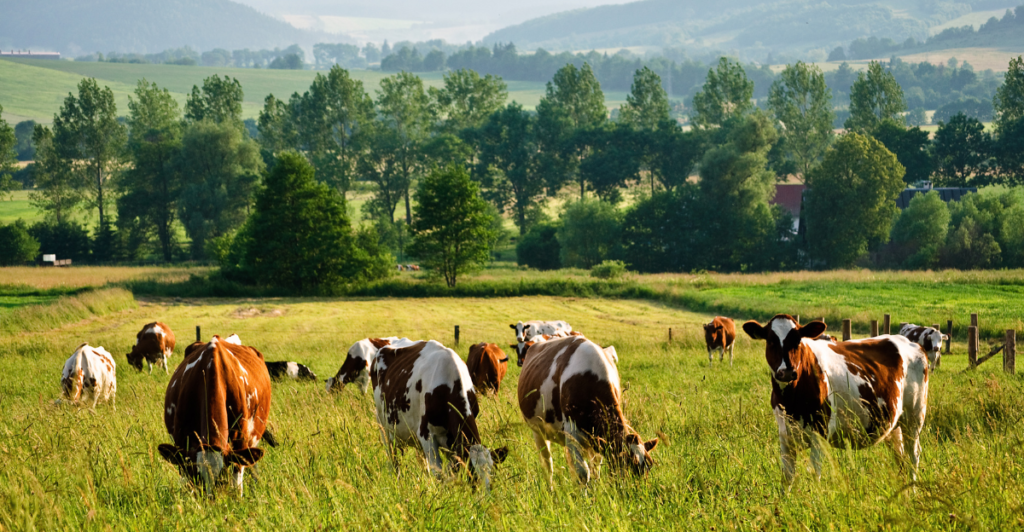
Sheep are ideal for solar grazing due to their smaller size, gentle grazing habits, and lower impact on the land. Unlike cows, they don’t trample vegetation or damage solar panels. Compared to goats, sheep are less likely to eat harmful plants and require less maintenance, making them the perfect choice for sustainable solar farm management.
Benefits of Grazing Sheep on Solar Farms
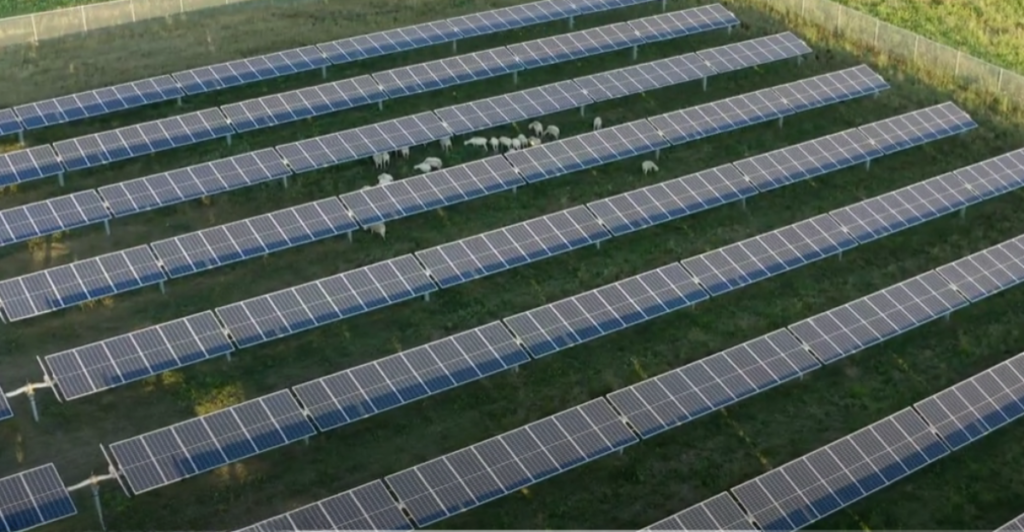
Grazing sheep on solar farms brings a range of benefits that go beyond just keeping the land tidy. This unique practice promotes natural vegetation control, lowers costs, and supports sustainable energy solutions:
Natural Vegetation Control
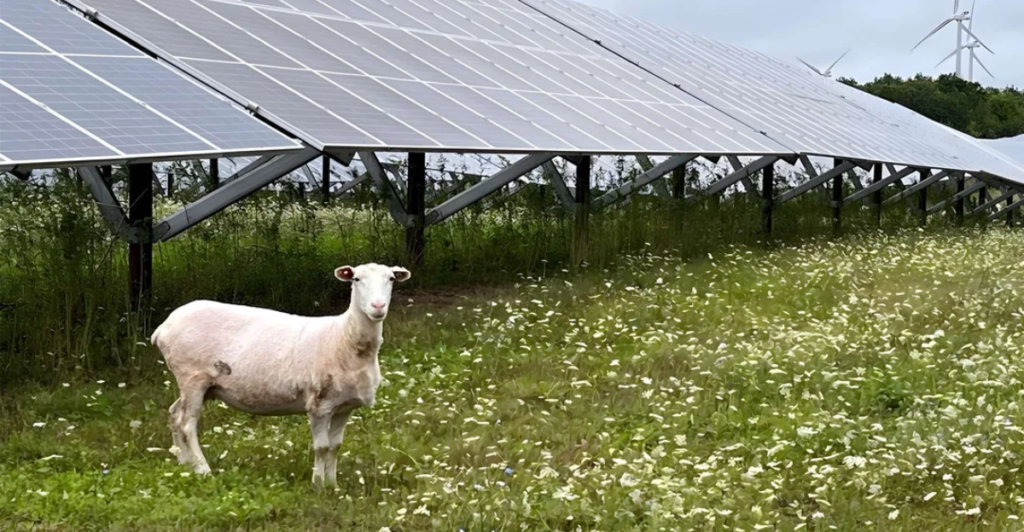
Sheep naturally graze on grasses and weeds, keeping vegetation under control without the need for harmful herbicides. By preventing overgrowth, they help maintain the optimal angle for solar panels to receive sunlight, which increases their efficiency. The grazing also protects solar farm workers from having to manually trim vegetation manually, ensuring a safer, more efficient space.
Cost-efficiency
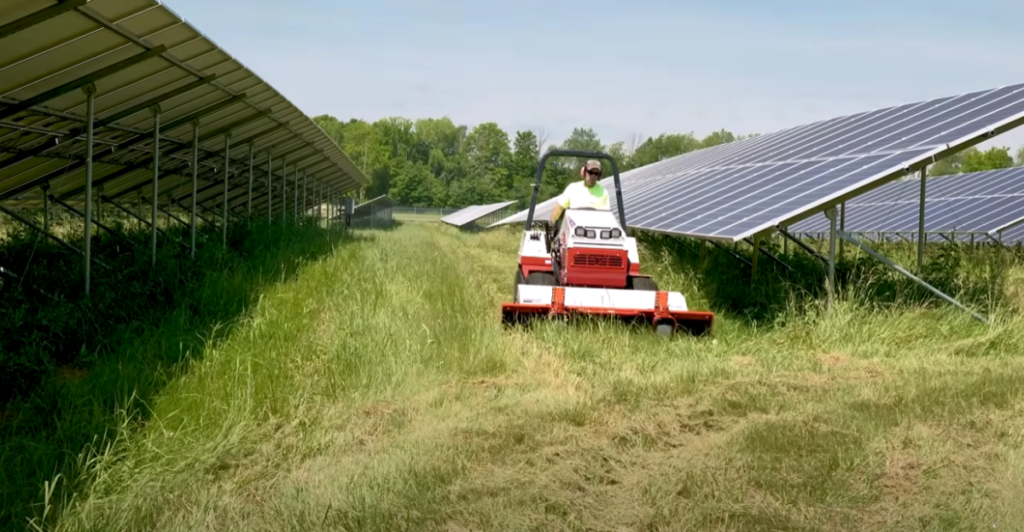
Using sheep for grazing can reduce vegetation management costs by up to 75% compared to traditional methods like mowing. The American Solar Grazing Association estimates grazing livestock is 30% cheaper than manual landscaping. Some companies, like Nexamp in Massachusetts, have reported even greater savings, making sheep a highly cost-effective solution for solar farms.
Sustainability
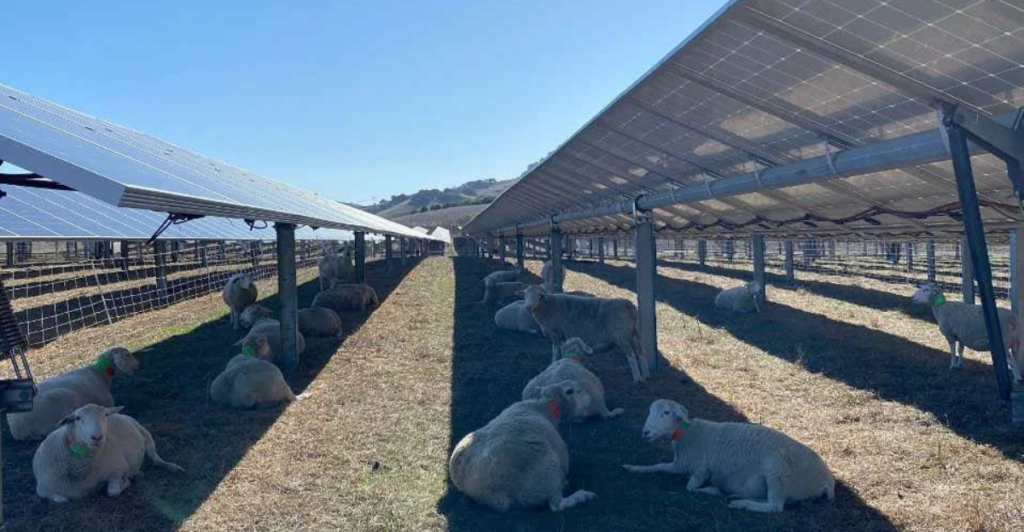
Solar grazing aligns perfectly with sustainability goals by promoting eco-friendly land management. Sheep provide a natural way to keep land clear, reducing the carbon footprint compared to conventional methods like gasoline-powered mowers. Additionally, by grazing on solar farms, sheep preserve habitats and enhance biodiversity, making it a practice that’s good for both energy and the planet.
Environmental and Ecological Impact
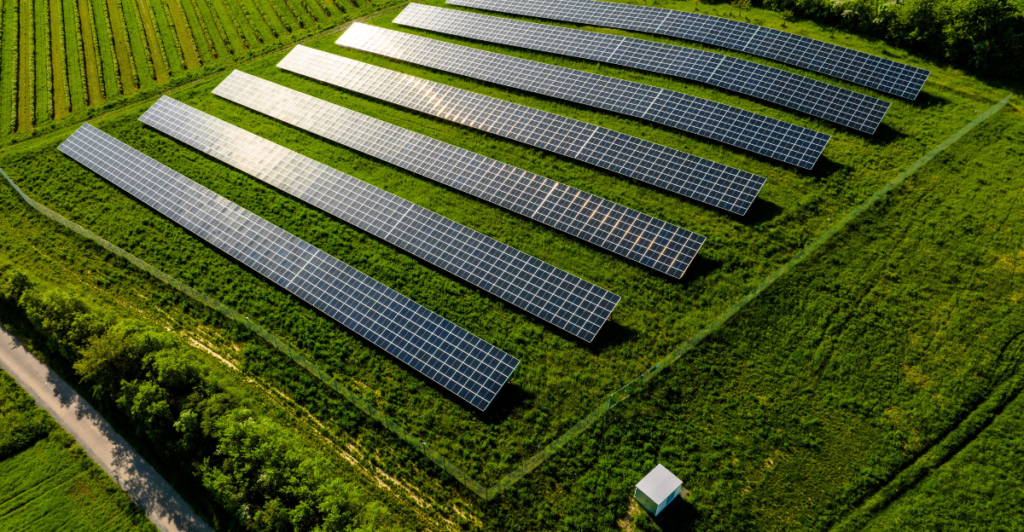
Solar grazing goes beyond clearing grass; it preserves ecosystems. By grazing on solar farms, sheep help maintain healthy soil, reduce erosion, and promote plant diversity. The absence of chemicals used in traditional vegetation control also protects local wildlife, allowing for a balanced, healthy environment. In this way, sheep contribute to the long-term ecological health of solar farms.
Growing Popularity of Solar Grazing
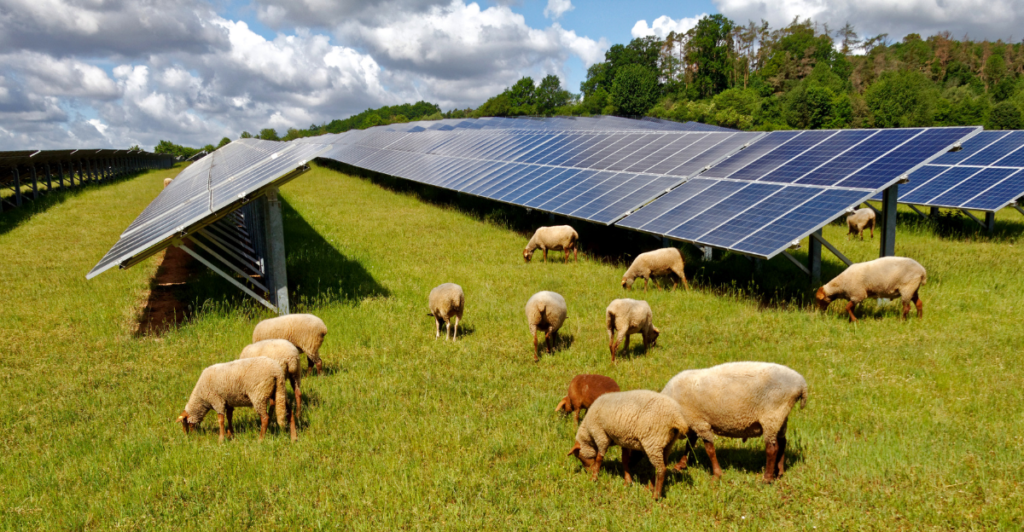
More companies are adopting solar grazing for vegetation management. SB Energy’s 4,000-acre Texas project uses 3,000 sheep instead of gas-powered mowers. Lightsource BP’s Wildflower farm in California employs over 800 ewes and lambs on its 16.5MW solar project. The Ledgeview Solar Project in Wisconsin uses a flock of 60 Texel sheep beneath its panels.
Challenges and Considerations
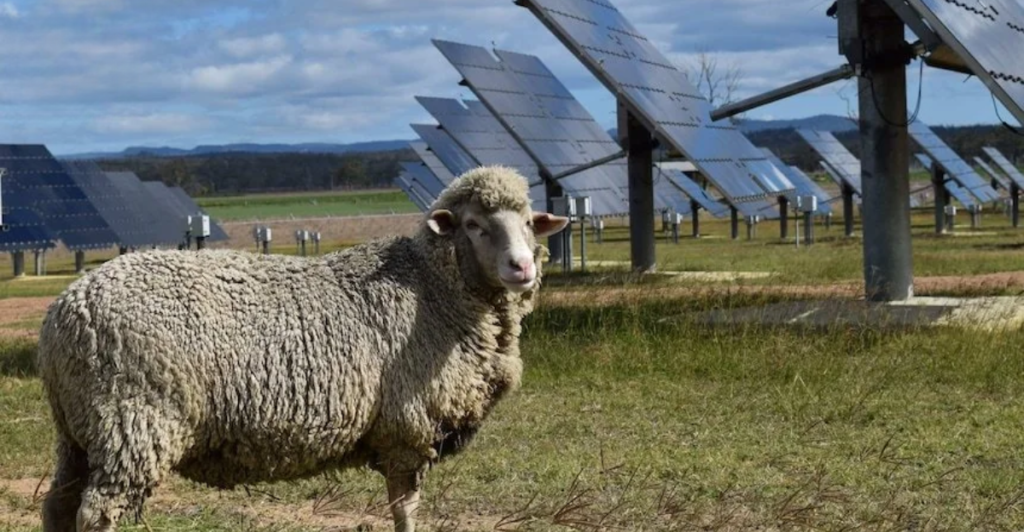
Solar grazing offers many benefits but also presents challenges. Not all solar farm sites are suitable for grazing—site evaluation is key. Animal health must be prioritized, with proper care and safety measures. Integration with solar operations requires clear coordination and communication between farmers and operators to ensure smooth functioning.
The Future of Solar Grazing
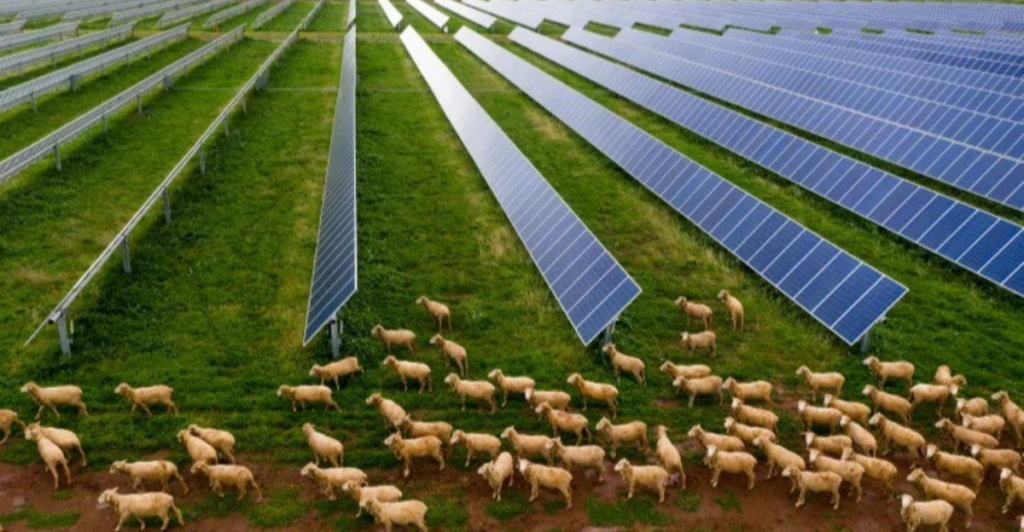
The future of solar grazing looks bright as more solar projects embrace sustainable practices. With an increasing focus on green energy, more innovative solutions are likely to emerge that combine solar power generation with ecological land management. Sheep grazing could become a standard practice for solar farms across the U.S., leading to even greater benefits in land management, energy efficiency, and environmental impact. The future is certainly grazing in the right direction!
Discover more of our trending stories and follow us to keep them appearing in your feed

Massive Solar Plant Is Shutting Down Early—Saving Californians Over $500M
The War on Cows Is Over—And Green Extremists Have Lost
Wolves Still Roam In These States in 2024—Is Yours On The List?
There Will Be Eruptions”: Concerns Mount as Yellowstone Supervolcano Activity Shifts
References:
Reference 1
Reference 2
This article first appeared here
Stay connected with us for more stories like this! Follow us to get the latest updates or hit the Follow button at the top of this article, and let us know what you think by leaving your feedback below. We’d love to hear from you!







